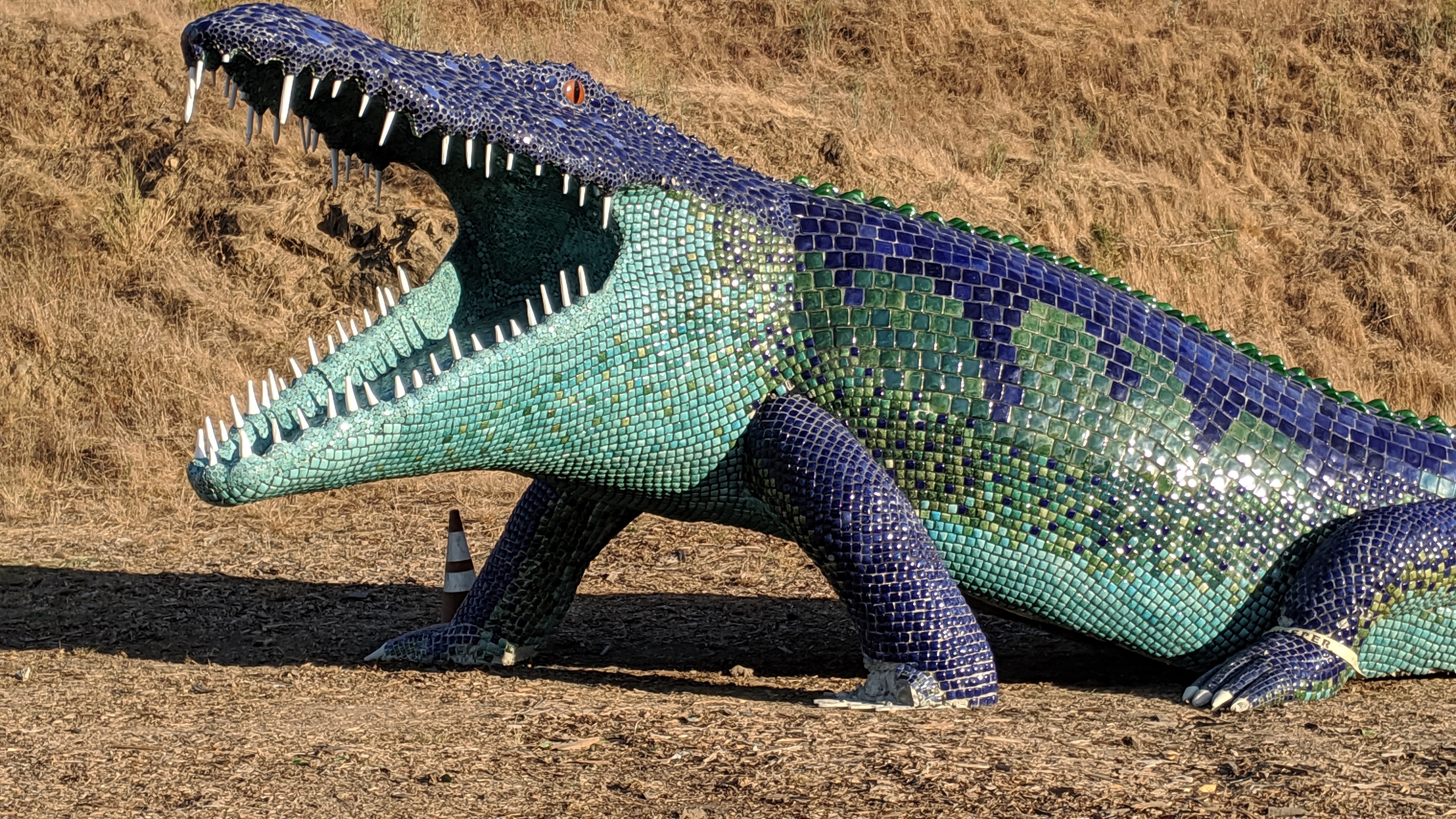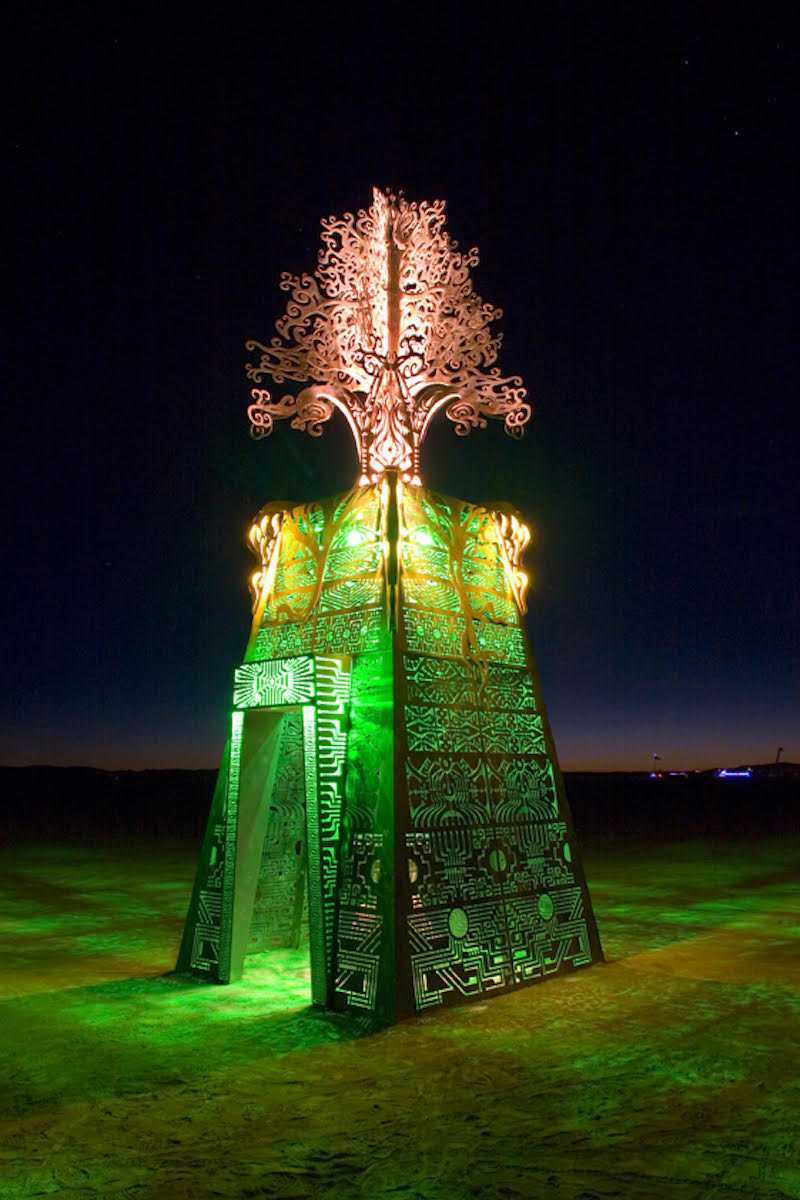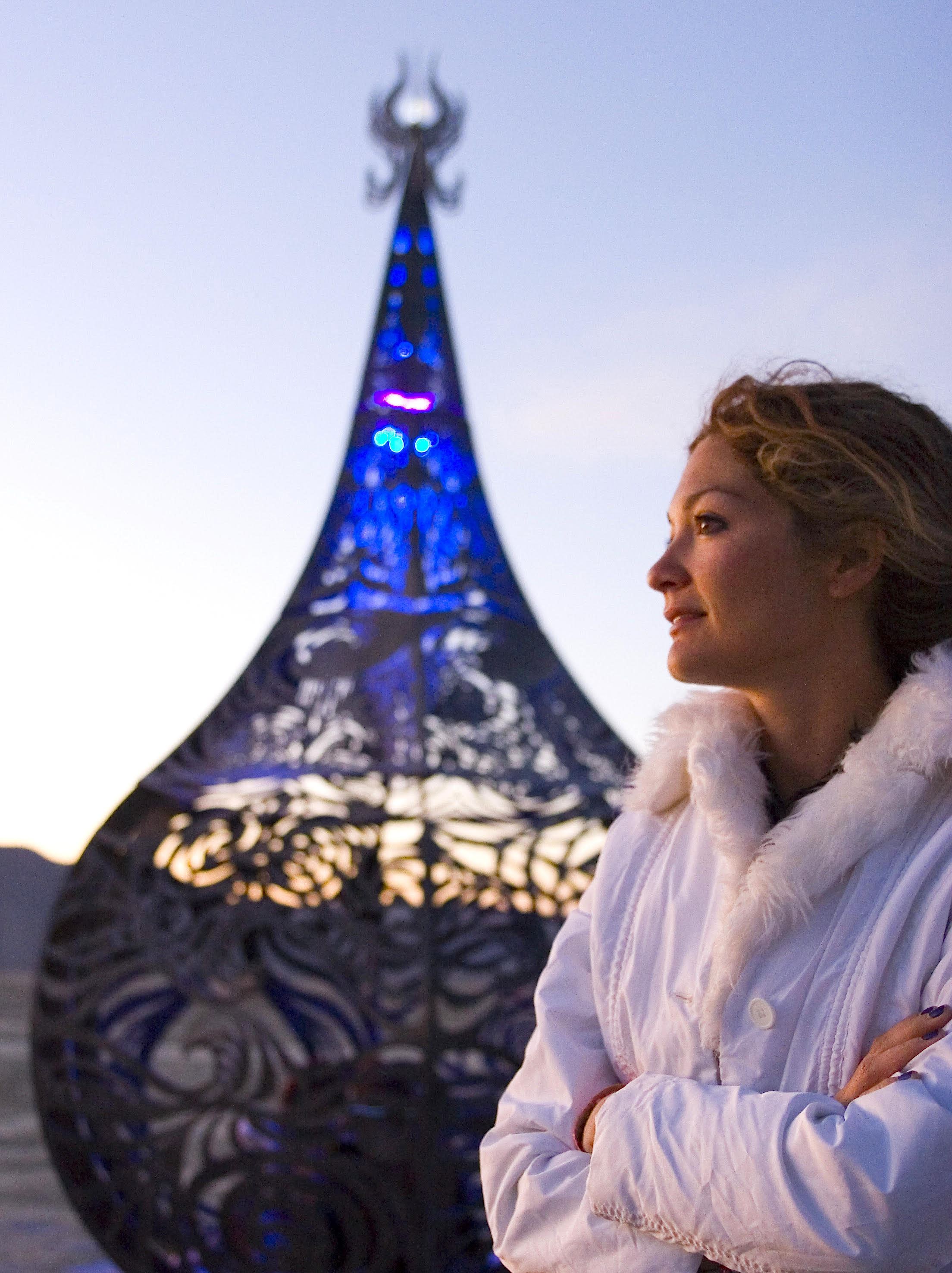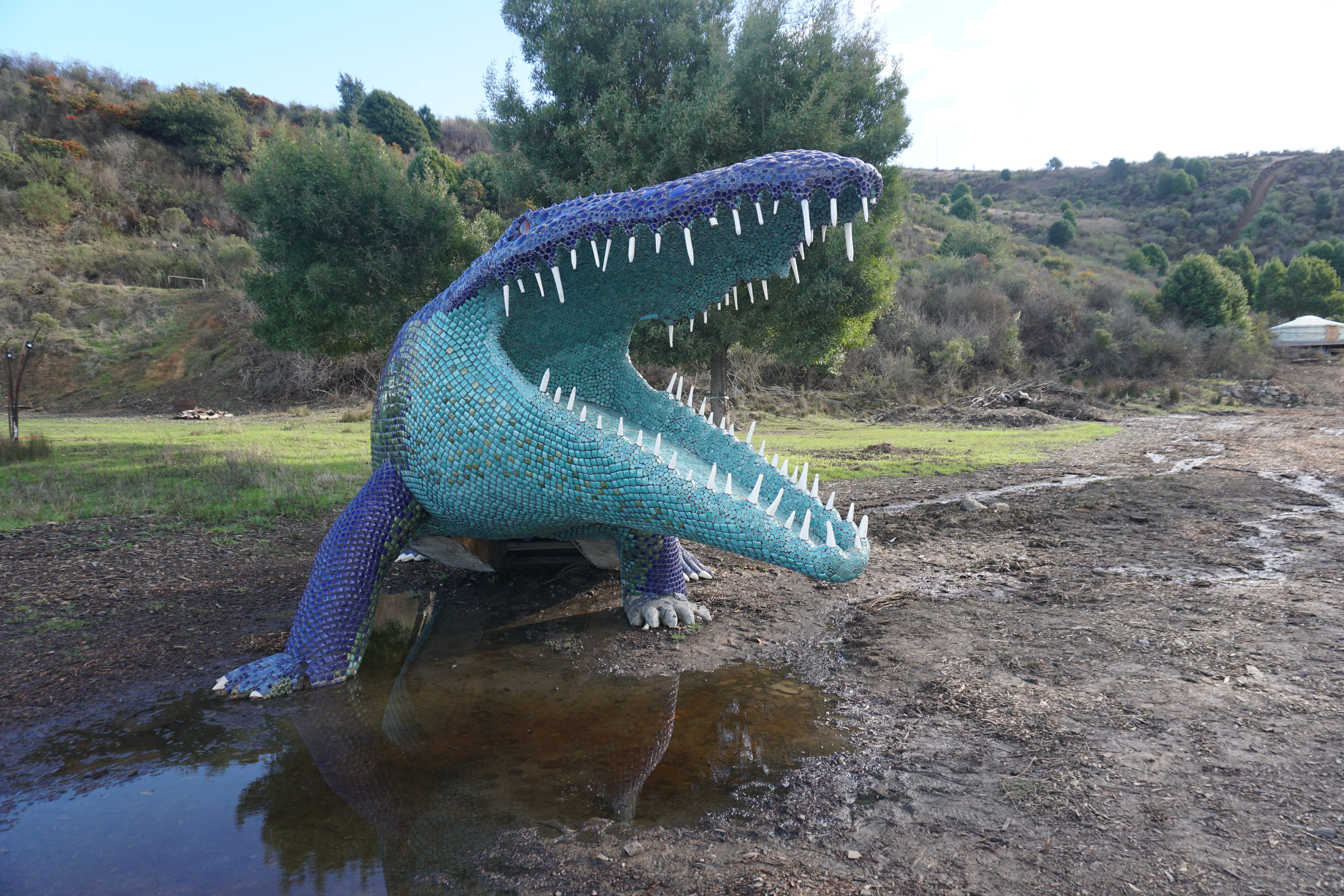Journalist Calvin Trillin once claimed that California had “a profusion of lawn sculpture…as a natural product of a large retired population and a climate that permits outdoor hobbies.” Quirky though California landscaping may be, its public art has always involved more than plastic flamingos. It also involves cats and crocodiles.
Thanks to the work of the nonprofit group We Are From Dust (WAFD), a new art park at Point San Pablo Harbor contains Peter Hazel’s 40-foot long mosaic crocodile “Niloticus” and Paige Tashner’s “Purr Pods,” cat sculptures that purr when touched. The volunteer effort emerged from the dust of Burning Man, appropriately enough, to place large-scale artworks in public spaces.
WAFD’s leaders aim to create an afterlife for the large-scale installations that are part of the yearly desert festival, as well as other works of “participatory art” that are created or experienced collectively. “We believe that art is one of the most important cultural drivers for social interaction and positivity,” Will Chase, one of WAFD’s leaders, says. Their goal is to transfer the energy of Burning Man into the ethos of making public, participatory art both accessible and sustainable.

Image courtesy of We Are From Dust
“We’re in a time where human connection is precious, and it’s also been so severely distorted,” Chase said. “[Art is] more important than ever, given everything that we’re in, but it’s also going to be…the least prioritized.” In this period, he says, “People are…reinventing everything. So the question falls to us, ‘Well, how do you reinvent art?’”
According to Chase, no one has the answer just yet. “We’re all still figuring out where our ass is and our elbow is,” he says. But “our goal is to see what we can do to keep participatory art as a strong cultural driver and social driver through all of this.”
Marian Goodell, Burning Man’s CEO, is also a supporter of WAFD’s aims. “Their intention and their focus is so powerful and important,” she says. “Their endeavor to take large-scale art, engaging-our-community art, and to help install it in places where it can be really experienced is really powerful…That’s the real deal.”
WAFD’s efforts have made the park at Port San Pablo Harbor “a destination,” according to Goodell, with works by Kate Raudenbush and Michael Christian as well as Tashner and Hazel.
Raudenbush, whose 2010 contemplation on tech-worship “Future’s Past” is installed in the park, says she loves working with WAFD because they understand the logistics of large sculpture. “They highly respect working artists, and don’t expect artists to work for free or…‘for exposure,’ she says. “They also share my visions of the role of art in society: art can be inclusive, it has a socially connective force, and art can be a conduit to contemplate the important issues of our time.”

Image courtesy of Kate Raudenbush
Tashner agrees with Raudenbush about WAFD’s push to “engage the public” with interactive art: “They’re trying to make that available to everybody, because it’s a really unique, wonderful experience.” In the time of coronavirus, Tashner says that interacting with works outdoors can be helpful even if you don’t touch or climb them just yet.
In addition to the two at Port San Pablo, one of Tashner’s “Purr Pods” has found a home at the American Museum of the House Cat in North Carolina, and WAFD commissioned another for an upcoming exhibition in Bristol, UK. “They are trying to find and help other artists, which is so wonderful about them—they have this beautiful vision of bringing [art] all over the world,” Tashner says.
WAFD has been crowdfunding to support artists during this period of slowed work and canceled commissions—especially for participatory art, which involves close contact during construction as well as use. In addition to the financial support, Chase says, “We’re lining things up in anticipation of being able to do participatory art again,” and exploring other forms of interaction such as artwork that can be controlled remotely.

Image courtesy of Kate Raudenbush
Goodell’s current focus is on planning for the future of Burning Man, especially its virtual edition in 2020, but she hopes to collaborate with WAFD as well: “One of my priorities is to help support them.” The artists that are integral to Burning Man’s playa still need homes for their work, whether temporary or permanent.
In this climate, Raudenbush predicts that sculpture parks will prove more popular than ever. “I really hope to see more outdoor art exhibitions,” she says. “I believe that sculpture has a huge role in “place-making” in public spaces.” Goodell agrees. Organizations like WAFD are “creating that opportunity to appreciate one another, and to sit near art” she says. “The art’s the magnet; art’s the flame.”
“This experience of us being sheltered from each other [in quarantine] is creating suspicions towards other people, towards the stranger…so we need the bridges” that art provides, Goodell adds. “Even if you’re six feet away, it brings people near.”



















0 Comments